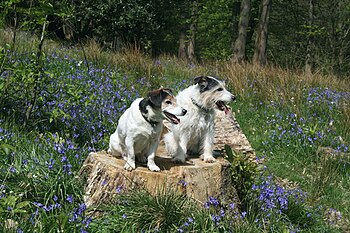There is, in fact, a significant environmental consideration in owning a pet. Consider, for instance, the manufacture of pet foods and all the packaging involved, and consider the synthetic rubber and plastic toys pet owners often buy for their animals. Here are some tips on how you can make pet ownership more eco-friendly.
Managing Pet Wastes
 |
| (Photo credit: Wikipedia) |
Cats - Scooping kitty litter is one of those tasks that most cat owners dislike, but you can at least make it a more eco-friendly venture by also using biodegradable bags to place the "scoopings" in. Also, effective, biodegradable kitty litter is available and is a good, eco-conscious choice.
Buying vs. Making Food
Interestingly, pets produce more of that problematic waste material (i.e. poop) when they are fed cheap pet food that's full of fillers and artificial colors. Also, the manufacture of pet foods on such a massive scale may not be the most environmentally friendly thing.
Consider making your own pet food, or buying sustainable, pre-made pet foods that are simple and natural. It's not too hard to make your own pet treats, either - they are basically just hard biscuits made in pet-friendly flavors.
Does Your Dog or Cat Really Need That?
Let's face it - it's fun to buy little cute toys and things for your fur babies. But does your dog really need another rubber squeaky toy, and does your cat need another plastic dingle ball? Many dogs are happy with a stick or a favorite toy or two, and many cats just enjoy an inexpensive piece of string. Rope toys made from natural hemp are an option for dogs, and many cats enjoy rolling on catnip, which you can grow yourself.
 |
| (Photo credit: Wikipedia) |
Controlling fleas is important for your pet's health and comfort. But using pesticides on your pet's body may be harmful both to your pet's health and to the environment. Consider eco-friendly, herbal flea collars, sprays, or spot-on treatments. It's also a good idea to comb your pet daily to remove fleas that were picked up outdoors before they get established.
By following just a few simple green tips, you can make owning a pet better for you, them, and the environment.






